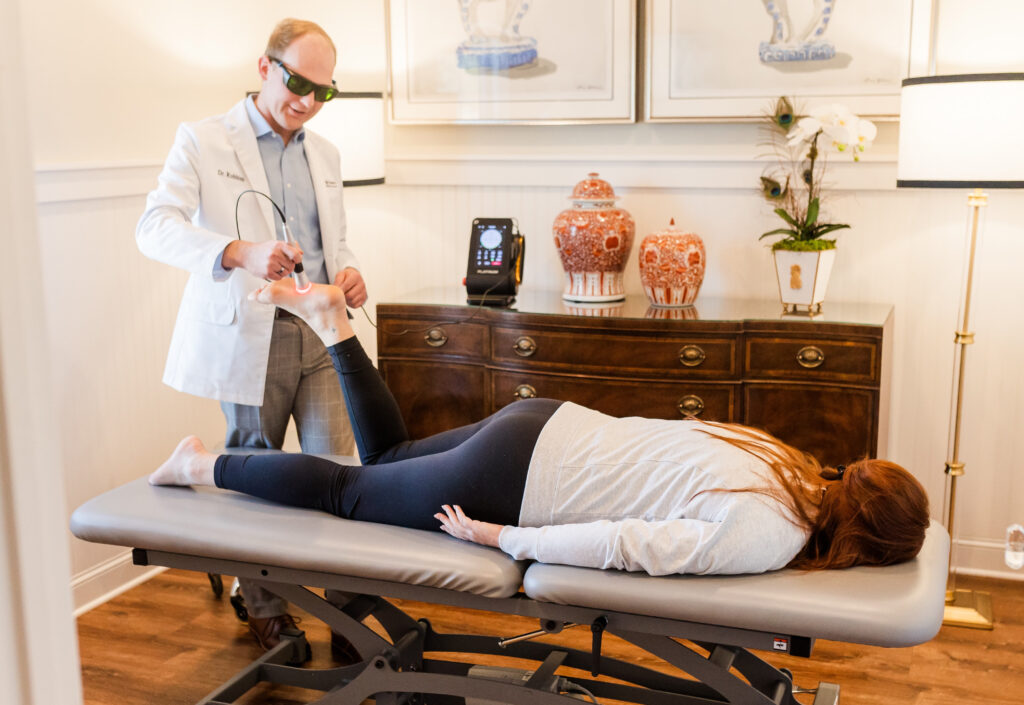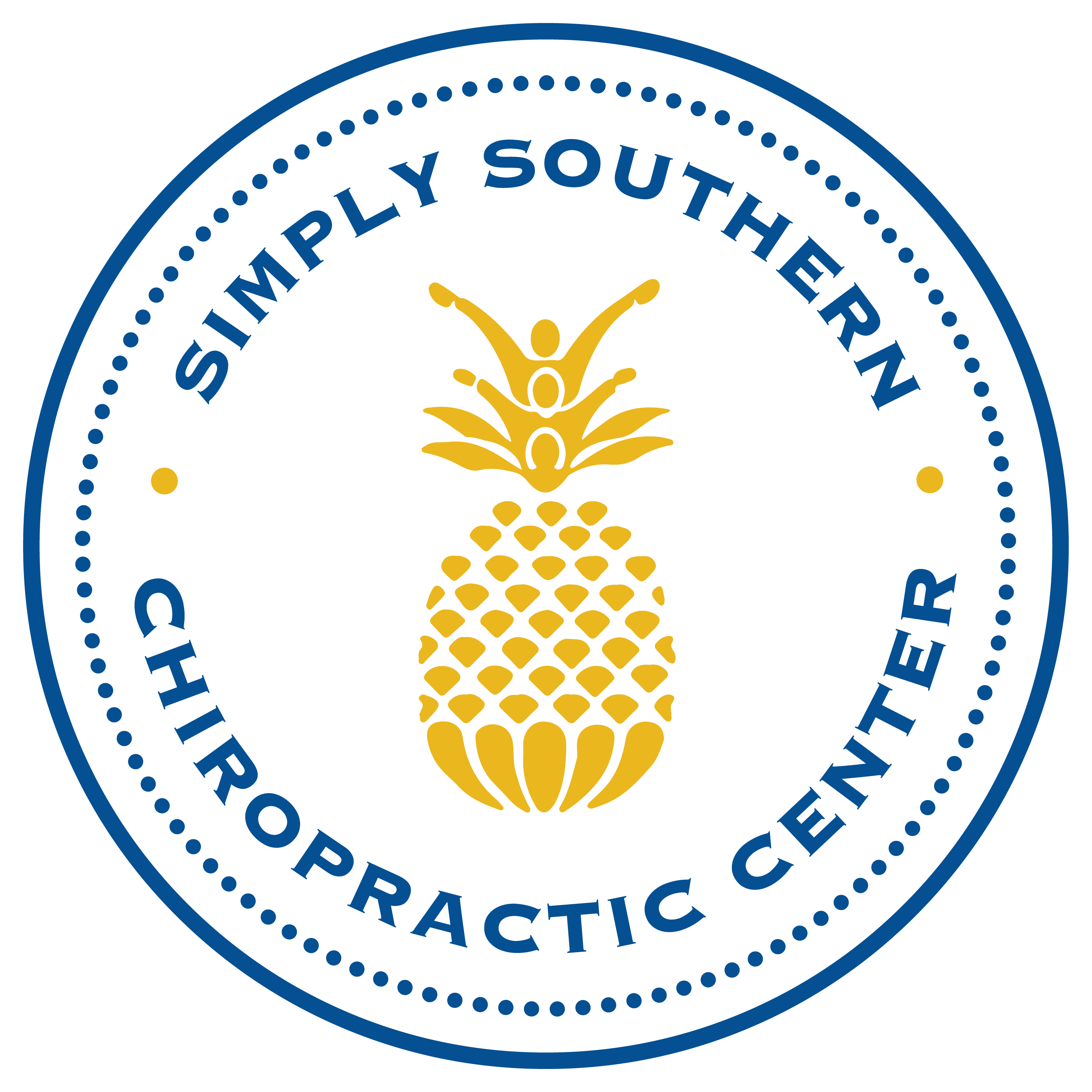
Key Points
•Cold laser therapy is a healing technique that uses infrared and near-infrared light to penetrate deep into tissue. The goal is to speed the healing process by reducing inflammation and boosting cells in the affected area for recovery.
•Cold laser therapy is a healing technique that uses infrared and near-infrared light to penetrate deep into tissue. The goal is to speed the healing process by reducing inflammation and boosting cells in the affected area for recovery.
•Cold laser therapy is a healing technique that uses infrared and near-infrared light to penetrate deep into tissue. The goal is to speed the healing process by reducing inflammation and boosting cells in the affected area for recovery.
Table of Contents
- Cold Laser Therapy
- What Is Cold Laser Therapy?
- How Cold Laser Therapy Works
- Benefits of Cold Laser Therapy
- What to Expect from Class IV Cold Laser Therapy
- Our Favorite Class IV Cold Therapy Laser
- Cold Laser Therapy in Greenville, SC
- About the Author
- References
Cold Laser Therapy
Chronic symptoms of pain, inflammation, and swelling are the primary reasons patients come to Simply Southern Chiropractic. If this is you, we understand the unique struggle of new physical limitations and the pressure to “continue life as normal”—despite added pain or discomfort.
You may be told to take ibuprofen as a pain management tool or to wait six weeks before you move from the couch. This is a short-sighted view of recovery and pain management.
Luckily, there are many other techniques we can try to reduce inflammation, cut pain off at the source, and get you back to your favorite activities—without relying on painkillers or constant rest.
One of these techniques is cold laser therapy.
This is an effective (and non-invasive) pain relief method that’s used in therapeutic settings, like a chiropractor or physical therapist’s office. Let’s explore the benefits of cold laser therapy and determine if it’s right for you.
What Is Cold Laser Therapy?
“Cold laser therapy” may sound exotic, but it really isn’t. In fact, if you’ve been introduced to at-home red light devices (used for anti-aging and detox), you already have some understanding of what cold laser therapy can do.
Cold laser therapy uses infrared and near-infrared light to penetrate the skin and promote an anti-inflammatory response in the body. While it’s similar to red light therapy, the use of lasers instead of LED light makes it much more effective.
In fact, cold laser therapy is so advanced that it can only be used by trained professionals.
As a therapeutic resource, we combine the healing powers of infrared wavelengths with intentional movement for a non-invasive method of fast healing and reduced pain.
How Cold Laser Therapy Works
Cold laser therapy uses infrared light and pulsating wavelengths to penetrate deep into tissue. The body absorbs the light, encouraging damaged cells to regenerate while turning off the inflammatory response. That’s just the beginning of what cold laser therapy can do.
In the medical community, there are several different names for cold laser therapy. The same treatment may be called:
- Photobiomodulation
- Class IV Cold Laser Therapy
- Low-Level Laser Therapy (or LLLT)
- Soft Laser Biosimulation
Let’s clear up a common misconception: cold laser therapy isn’t actually cold at all. When applied to the skin, you should feel a slight warming sensation.
The only reason it’s referred to as cold laser therapy is to differentiate this treatment from other laser treatments. We don’t want to confuse cold laser therapy with thermal (or hot) lasers that are used to perform surgery.
Benefits of Cold Laser Therapy
The known benefits of cold laser therapy keep growing—as researchers discover more and more powerful healing applications. Here are some of the most well-known benefits and why we use cold laser therapy with our patients:
- Reduce Inflammation
Whether you’re dealing with a chronic or acute injury, inflammation must be addressed to relieve pain, reduce discomfort, and promote faster healing. Cold laser therapy helps to cut out inflammation at the source. One study explains that it “accelerates cellular metabolism and the production of ATP.” Essentially, it boosts the mitochondria to calm inflammation on a cellular level.
- Improve Tissue Repair
Since cold laser therapy helps regenerate cells, it can decrease the time it takes to heal a wound and repair tissue. One study compared the wounds of patients who used cold laser therapy against those who didn’t. They found that six days after injury, the cold laser therapy group’s wounds were 153% smaller.
Even beyond the affected area, the same study showed that cold laser therapy could positively impact the surrounding tissue as well—creating a better overall healing environment.
- Restore Cell Function
One of the most powerful methods of healing is the ability to empower the cell. The cells manage everything from skin to ligaments, joints, and organs—so their health is critical when it comes to injury recovery. Cold laser therapy works to boost mitochondria function in the cell, specifically targeting injuries and problem areas for faster healing and better long-term results.
- Aid in Post-Surgery Recovery
Cold laser therapy has incredible healing potential for post-surgery patients. Due to its ability to regenerate tissue, restore cells, and relieve pain, cold laser therapy is one of our favorite ways to help patients recover. For example, one of our beloved patients unfortunately had emergency open-heart surgery after an unexpected heart attack. Per normal open-heart surgery procedure, his sternum was broken to perform the operation. After his surgery, he lost all sensation in his sternum area and the incision site was completely numb to the touch, not to mention the abundance of scar tissue that formed in the area, too. We applied the class IV cold laser to the affected area once a week for about four months, and he began to regain normal feeling along his incision site.
- Promote Sinus Drainage
Chronic sinus infections are becoming more common, and they often require unique treatments in cases of antibiotic overuse or biofilm presence (bacteria that are resistant to treatment). Since cold laser therapy is effective at removing inflammation and decreasing pain levels, it offers a unique form of support—giving your body the tools it needs for healing, rather than only focusing on the infection.
Cold laser therapy has shown to be antibacterial and antibiofilm, so it should work to eliminate the infection, too.
We love using cold laser therapy to relieve facial sinus pressure. It’s a helpful alternative therapy for asthma and allergies, and it can boost the immune system. It’s a very holistic approach to chronic sinus infections and their root cause.
What to Expect from Class IV Cold Laser Therapy
Your experience with class IV cold laser therapy will depend on your injury and personal needs. For serious injuries, our team applies class IV cold laser therapy directly to the problem area—allowing the patient to rest and rejuvenate.
In other cases, we find it effective to pair cold laser therapy with something called instrument-assisted soft tissue mobilization (IASTM). This is a therapy that brings blood flow back to an injured area but may induce temporary inflammation in the process. Cold laser therapy helps alleviate that inflammation and the associated pain response.
In general, we find that patients who use cold laser therapy heal much faster than patients who don’t. We particularly recommend it if you’re in such severe pain you need multiple sources of relief. It’s also a fantastic asset for competitive athletes who want to get back to their regular routines.
Our Favorite Class IV Cold Therapy Laser
As we mentioned earlier, LED infrared light isn’t the same as class IV cold laser therapy. While it operates on the same idea, the difference between LEDs and laser therapy is light quality.
In the same way, there are many cold laser products available—but some are superior. Our favorite is the Summus class IV cold laser which uses advanced technology to provide exceptional results. We use this laser on all our cold laser therapy patients—and we notice the difference in results when comparing it against other brands.
Summus Medical Laser also provides exceptional training for our staff and team. By completing this training, our providers can offer more excellent and advanced cold laser therapy.
Cold Laser Therapy in Greenville, SC
Chiropractic care is whole body care. Every day, we see firsthand how a combination of intentional treatments can jumpstart healing and get our patients back to their regular activities. Whether you’re dealing with a bulging disc, chronic illness, or sports injury, it’s our mission to support every system in your body—promoting healing from your cells to your muscles and bones.
One of the many ways we do this is with cold laser therapy. When combined with our other services, we find it extremely effective at reducing pain, swelling, inflammation, and more. It’s one way we help our patients rely on their body’s own healing methods to get the job done.
Click Here to Make a New Patient Appointment!
About the Author
Mary Frances Duncan, Doctor of Chiropractic, has always had a passion for chiropractic care and alternative medicine. Her forward-thinking approach has helped many patients improve or eliminate their symptoms—while providing them with tools and resources that cultivate a healthy long-term lifestyle.
In 2015, Dr. Duncan founded the first location of Simply Southern Chiropractic Center in Greenville, South Carolina, and opened her second location in Greer, South Carolina in 2020. She’s an expert in a variety of techniques, and she’s willing to go the extra mile to find answers and treatments for chronic pain.
Most recently, Dr. Duncan founded her own coaching practice that’s dedicated to helping other chiropractors reach more patients by taking their businesses to the next level.
References
Dima, R., Tieppo Francio, V., Towery, C., & Davani, S. (2018). Review of Literature on Low-level Laser Therapy Benefits for Nonpharmacological Pain Control in Chronic Pain and Osteoarthritis. Alternative Therapies in Health and Medicine, 24(5), 8–10.
Wickenheisser, V. A., Zywot, E. M., Rabjohns, E. M., Lee, H. H., Lawrence, D. S., & Tarrant, T. K. (2019). Laser Light Therapy in Inflammatory, Musculoskeletal, and Autoimmune Disease. Current Allergy and Asthma Reports, 19(8), 37. https://doi.org/10.1007/s11882-019-0869-z
Hopkins, J. T., McLoda, T. A., Seegmiller, J. G., & David Baxter, G. (2004). Low-Level Laser Therapy Facilitates Superficial Wound Healing in Humans: A Triple-Blind, Sham-Controlled Study. Journal of Athletic Training, 39(3), 223–229.
Percival, S. L., Francolini, I., & Donelli, G. (2015). Low-level laser therapy as an antimicrobial and antibiofilm technology and its relevance to wound healing. Future Microbiology, 10(2), 255–272. https://doi.org/10.2217/fmb.14.109
